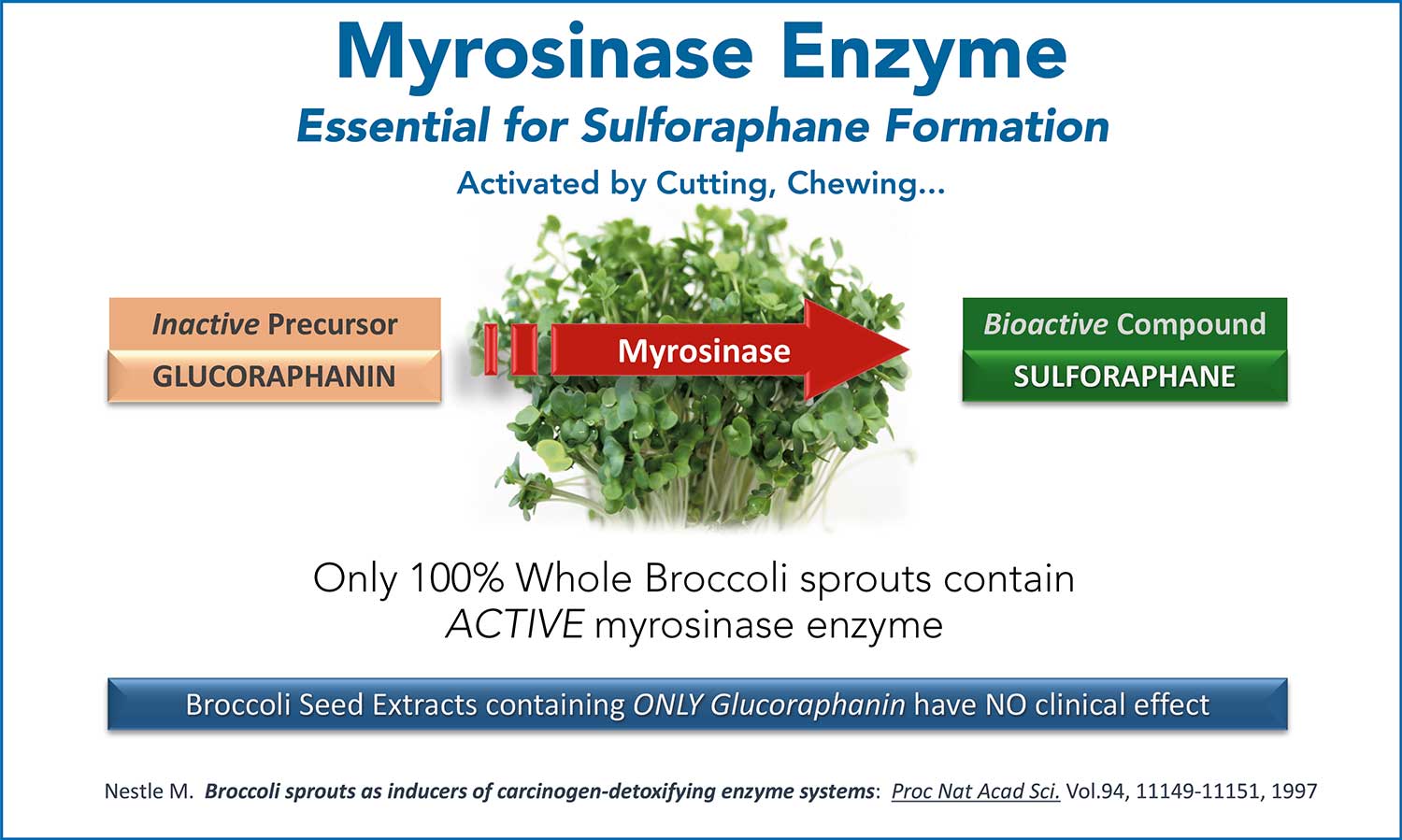Already somewhat disillusioned by the dominance of synthetic nutritional supplements within the nutrition professions, Christine immediately realised that the new science of nutrigenomics had the power to elevate the practice of Clinical Nutrition to the next level, especially in targeting the upstream defence mechanisms by which every human cell operates.
So began for her an era of intense research into the nutrigenomic properties of phytochemicals. By late 2005, she had discovered a French product, GliSODin® with the ability to potently upregulate the three primary antioxidant enzymes, Superoxide dismutase, Glutathione peroxidase and Catalase. Her decision to introduce this product to Australian clinicians led her to launch a new company which she named Cell-Logic.
 Quite fortuitously in the following year, 2006, Christine became aware of a broccoli-derived phytochemical, sulforaphane, already supported by a substantial body of research.
Quite fortuitously in the following year, 2006, Christine became aware of a broccoli-derived phytochemical, sulforaphane, already supported by a substantial body of research.
After realising the extraordinary potential of this small, lipid-soluble molecule, the future direction of Cell-Logic became immediately clear – the company would specialise in researching and developing nutrigenomically-active molecules as powerful clinical intervention tools.
With her primary background in Nutritional Biochemistry, Christine continues to enjoy translating the complexities of the science into the core principles, ensuring they are relevant to the needs of practising clinicians.
She is highly-regarded globally as an expert in phytochemicals and especially in the clinical applications of sulforaphane. Her three detailed scientific Sulforaphane Review publications highlight the many clinical applications of this remarkable phytochemical in addressing the common complaints that regularly confront practising clinicians.


 Quite fortuitously in the following year, 2006, Christine became aware of a broccoli-derived phytochemical, sulforaphane, already supported by a substantial body of research.
Quite fortuitously in the following year, 2006, Christine became aware of a broccoli-derived phytochemical, sulforaphane, already supported by a substantial body of research.



